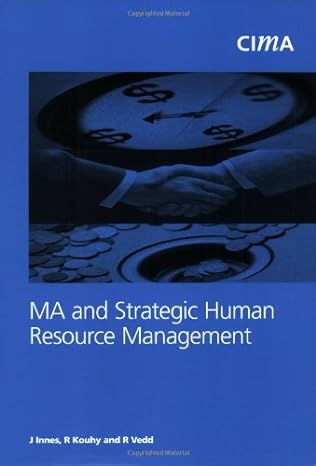Calculate the ERR (Employee Requirement Ratio) for the "known" years 20192022. - Calculate the forecasted HR DEMAND (\# OF EMPLOYEES) for years 2023-2025 using the 2022 ERR and the forecasted SALES figures. Here is the data: - Next, the management team has provided you with an additional set of sales projections and have asked you to determine HR demand based on these new figures using a productivity index for the years 2023-2025 that will be the average ERR over the years 2019-2022. The new forecasted SALES are: - Remember: the initial sales projections requires you to use the ERR for 2022; the second set of projections uses the average ERR for 2019-2022 - To receive full marks for this section your spreadsheet must include formulas no static numbers - as modelled in-class during week 5. PART B: FORECASTING SUPPLY 2. Now that you have forecasted the demand for labour, you turn your attention to ascertaiining HR supply. You have decided to use a MARKOV ANALYSIS. Markov analysis looks at historical patterns of employee movement between jobs to determine our internal supply for a particular job type, as well as seeing where there might be problems with too much or too little movement between jobs. 3. Navigate to the second sheet of the Excel Forecasting Assignment file named MARKOV ANALYSIS, you will be updating the data as per below (See Table 6.1 on page 147 for an example of a Markov analysis). - Enter the initial numbers of employees per job family (Job A, B, C, D). Use these numbers and the movement percentages in the transition probability matrix to obtain forecasted numbers of employees who will be in job families A, B, C, and D at the end of this year. As with trend analysis, we can track percentages of employee movement based on last year or on an average of a few previous years. MARKOV ANALYSIS TRANSITION PROBABILITY MATRIX EXPECTED MOVEMENTS OF EMPLOYEES FNn RF VFAR PREDICTED \# OF EMPLOYEES AT YEAR END - Next, complete the second table (Markov Analysis \#2) but for this forecast, the management team wants you to include numbers for an additional plant. Change the initial numbers of employees per job type to: - To receive full marks for this section your spreadsheet must include formulas no static numbers - as modelled in-dass during week 5. 4. Asha Co. decided to use a quantitative method for forecasting demand. Do you agree with that decision? Why? Your answer should include a comparison between quantitative and qualitative methods. 5. What conclusions can you draw from the demand analysis? 6. What is the Markov Analysis telling you in terms of supply? Are there any areas of concern? What are the external hiring needs? to the first sheet TREND/RATIO ANALYSIS (See the explanation of trend/ratio analysis in the text: pp. 106-108.) - Calculate the ERR (Employee Requirement Ratio) for the "known" years 20192022. - Calculate the forecasted HR DEMAND (\# OF EMPLOYEES) for years 2023-2025 using the 2022 ERR and the forecasted SALES figures. Here is the data











